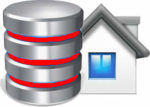Developing Enterprise Java Components
Just as the Java platform has revolutionized the way we think about
software development, the Enterprise JavaBeans (EJB) and Java Persistence
specifications have revolutionized the way we think about developing
mission-critical enterprise software. They combine server-side components with
distributed object technologies, asynchronous messaging, web services, and
persistence to greatly simplify the task of application development. It automatically takes into account many of the requirements of business systems
including security, resource pooling, concurrency, and transactional integrity.
EJB had its flaws, and many critics willing to point them out. EJB 3.0 was
designed to refocus on simplifying the developers’ tasks and fix those problems.
Because of the scope of this work, EJB 3.0 has greatly simplified enterprise
application development. Unfortunately the changes in EJB 3.0 leave developers
in need of an explanation of the fundamentals of EJB 3.0 and the Java
Persistence programming models. Fortunately Bill Burke, a lead developer at JBoss, has produced the updated fifth edition of “Enterprise Java Beans” now
called “Enterprise Java Beans 3.0” (Burke and Monson-Haefel, O’Reilly).
As Bill says, “Although EJB makes application development much simpler, it’s
still a complex technology that requires a great deal of time and study to
master. This book provides a straightforward, no-nonsense explanation of the
underlying technology, Java classes and interfaces, the component model, and the
runtime behavior of EJB.”
All the ways in which EJB 3.0 simplifies the standard are covered in detail: the
new Persistence API, which replaces entity beans with “plain old Java objects”
(POJOs); the use of Java annotations to provide information that was formerly
contained in XML deployment descriptors; and the elimination of the need to
implement the EnterpriseBean interfaces. This edition is updated with numerous
examples that show you how to use these new features. Furthermore, it includes a
workbook that shows you how to deploy all of these examples in the JBoss 4
application server.
This book covers the following topics and more:
-Developing Entity Beans, Session Beans, and Message-Driven Beans
-Using the Entity Manager and the Persistence APIs
-Relationships between Entity Beans
-Queries and the EJB Query Language
-Entity Inheritance Mappings
-The Timer Service
-Injecting resources and the JNDI ENC
-Interceptors
If you’re using EJB 3.0, plan to migrate to it, or would like to see what it
offers, “Enterprise Java Beans 3.0” sets the standard. It’s the one resource you
need.
Bill Burke, is lead developer at JBoss, a Red Hat subsidiary, and represents the
company on the EJB 3.0 and Java EE 5 specification committees. Coauthor Richard
Monson-Haefel is one of the world’s leading experts on Enterprise Java. Foreword by Linda DeMichiel, EJB 3.0 Specification Lead.
